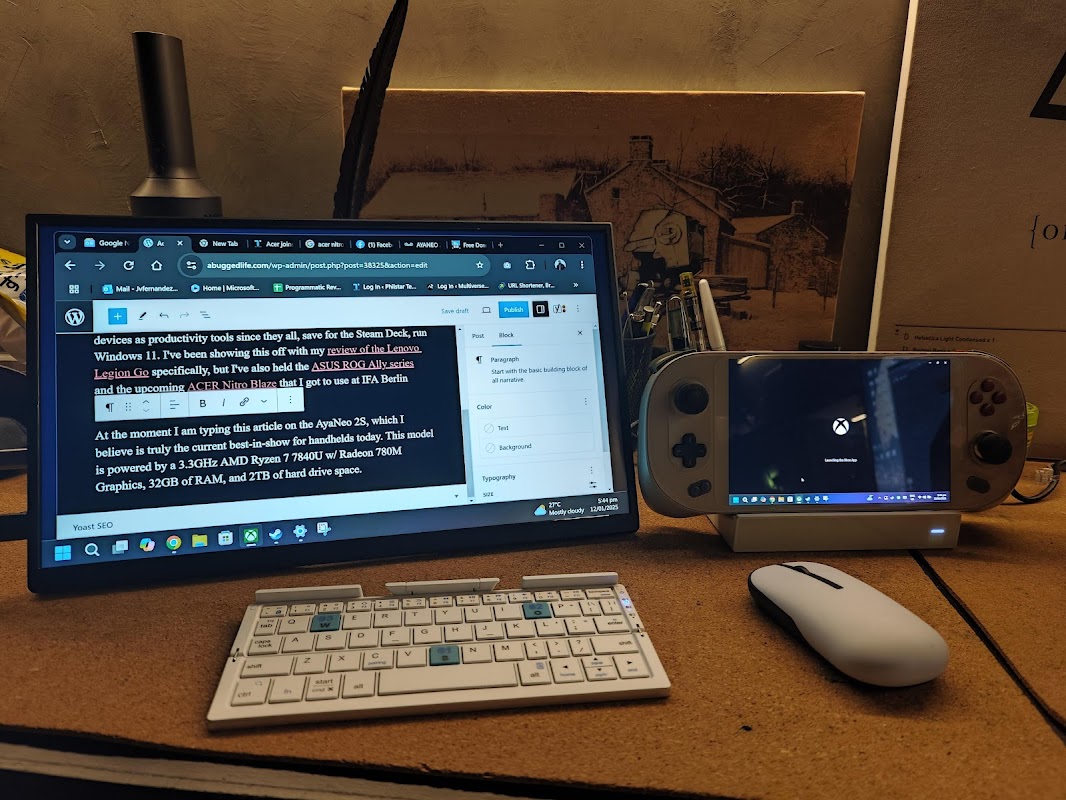Category: Geek
-
Fuji goes wide with the instax Wide Evo, yours for P22,599
The Fuji instax Wide Evo is the latest addition to the instax line. Its previous model was an affordable hybrid digital and instant camera that captured the hearts of many because it was affordable and refreshing to be able to print photos on the fly, while still being a digital camera. @barpoinsettia #instaxwide #InstaxWideEvo #Fuji…
Written by

-
7 Reasons Why Getting the iPhone 16e with Home Credit Is the Smartest Move Right Now
Back in the day, Smart Communications had a piso sale with the iPhone 4 and 3GS. Piso Sale: We have now gone a long way. Apple’s newest innovation, the iPhone 16e, is finally here—and it’s more accessible than ever, thanks to Home Credit Philippines. If you’ve been eyeing an upgrade, this might be the best…
Written by

-
First Impressions: POCO F7 Ultra is decked out, promises to be affordable
It all depends on the final price, but the POCO F7 Ultra has a lot going in terms of specs. Many say it’s a rebranded Redmi K80 Pro .. and that’s not a bad thing. This might be the most affordable Snap8 Elite device so far with an Antutu total score of 2.27M. Was also…
Written by

-
Reunited with my first real laptop, the ThinkPad 700C at the Lenovo Yamato Lab
Last week I was reunited with my first laptop in my coming of age years. Technically it was not the first. In the late 80’s was tinkering with a white Toshiba laptop with touting the first liquid crystal display at that time, a huge upgrade from my 4-color CGA 386 desktop. I digress.
Written by
-
Productivity is the sum of its parts with the Ayaneo 2s
I’ve been reviewing portable gaming handheld devices for the better part of 2024. More than being a gaming companion when I am waiting in line for my turn at the counter, I’ve become fixated with these portable devices as productivity tools since they all, save for the Steam Deck, run Windows 11. I’ve been showing…
Written by

-
Unboxing the Boya mini wireless lavalier mic
So small. So good. From afar the Boya mini mic dock looks like a typical pair of wireless earbuds. It’s only upon further inspection that you’ll realize they’re mics. That’s because both lavaliers come with puffy windscreens that also look like in-ears. I was lucky to have bagged these as an evaluation unit from JG…
Written by

-
Watch: VinFast VF3 test drive around Aseana
Is this a car or a golf cart? One thing’s for sure. The VinFast VF3 is making waves as a darling of an EV on the roads of Manila as of late. Would you buy this for P645,000? Watch our in-car conversations to find out if this is meant for you!
Written by

-
So you want to be an influencer? JBL can help with that with their Campus Ambassador Program
So you want to be an influencer? Like a real influencer that can engage with an audience, work with brands to showcase your own unique style? Well JBL Philippines can help with that. Enter their JBL Campus Ambassador Program. JBL is looking for vibrant college students enrolled for this schoolyear 2024-2025 who are interested to…
Written by

-
Ultra affordable itel P65 goes for only P4,599
This article originally appears in PhilSTAR Tech. itel has unveiled its latest super-budget phone, the P65. If you’re looking for an entry level phone that does NOT look cheap, consider this. Here are the specs: SPECS So yes, as you can see this is a device that really answers the question “I need an Android…
Written by

-
Using GCash in Japan, ‘Star Trek’ translators on the Samsung Galaxy series
Like many Filipinos, I recently took a trip to Japan over the Holy Week. Not to see the cherry blossoms’ first bloom, but to dwell into an irony that many travelers have observed in their sojourns to the Land of the Rising Sun. That is, as high-tech and quirky the Japanese can be with robots,…
Written by


